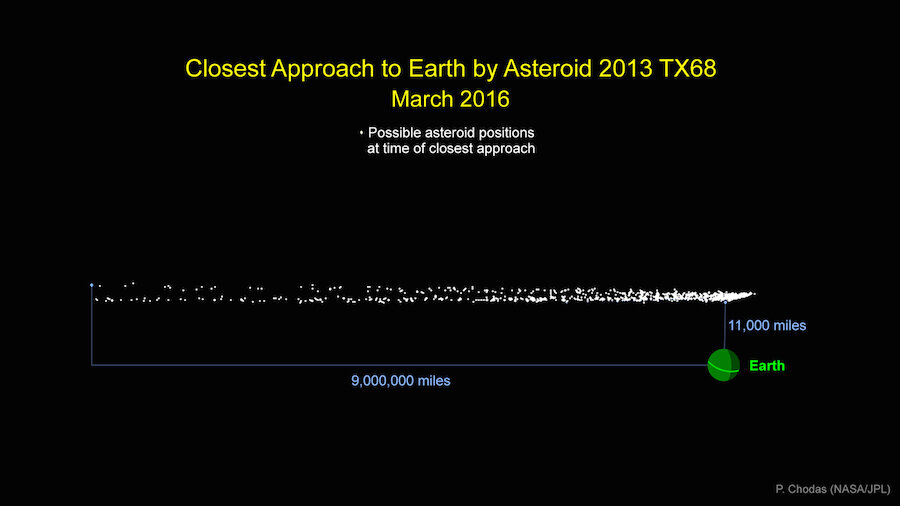How the March asteroid flyby shows Earth on alert
Loading...
Earth can expect an asteroid flyby in March, NASA says.
A 100-foot asteroid will complete its second trip past the Earth in March. Asteroid 2013 TX68 first flew past Earth roughly two years ago, but never got closer than 1.3 million miles. This year, scientists expect the small asteroid to come much closer: between 11,000 miles and 9 million miles above the surface.
Why the enormous range? Uncertainty over the asteroid's precise trajectory.
But scientists are certain that the asteroid will stay in space: “There is no possibility that this object could impact Earth” in 2016, says a NASA press release. (But 2017 is another story: the risk increases to a 1-in-250 million chance of an impact.)
With no immediate threat of an asteroid Armageddon, why does Asteroid 2013 TX68’s flyby matter?
Because it demonstrates a growing awareness of the risk from space objects.
“Asteroid detection, tracking, and defense of our planet is something that NASA, its interagency partners, and the global community take very seriously,” John Grunsfeld, associate administrator of NASA’s Science Mission Directorate said in January.
"The 2013 Chelyabinsk super-fireball and the recent 'Halloween Asteroid' close approach remind us of why we need to remain vigilant and keep our eyes to the sky.”
In 2013, a meteor exploded in the sky above the Russian city of Chelyabinsk. As The Christian Science Monitor reported, the blast was likely one of the first of its kind to be recorded from every angle and to take place over a dense urban center. The shockwave from the explosion shattered windows, damaged buildings, and injured more than 1,000 people.
"I was driving to work and suddenly there was this flash that lit everything up like bright sunlight," one witness from Chelyabinsk told the Monitor. "The shock wave nearly drove me off the road."
With little warning from the Russian military, who cited expectations the asteroid would break up in the atmosphere, the blast acted as a powerful reminder of the danger posed by space objects colliding with the Earth.
Since the Chelyabinsk fireball, asteroids and other objects have received much greater attention, including Spooky the Halloween asteroid, which passed Earth in October 2015, and a 2015 Christmas asteroid that prompted reports of asteroid-induced earthquakes.
In January, NASA announced the creation of the Planetary Defense Coordination Office, continuing the work that the Near-Earth Object Program has performed since 1995. The new department is tasked with tracking objects that could threaten Earth and preventing the threat.
These efforts have sped up the spread of information about close asteroids. Where the Chelyabinsk asteroid went without mention until the explosion, Asteroid 2013 TX68’s trajectory has been shared months ahead of its March flyby.
"The possibilities of collision on any of the three future flyby dates are far too small to be of any real concern," said Paul Chodas, manager of CNEOS. "I fully expect any future observations to reduce the probability even more."








